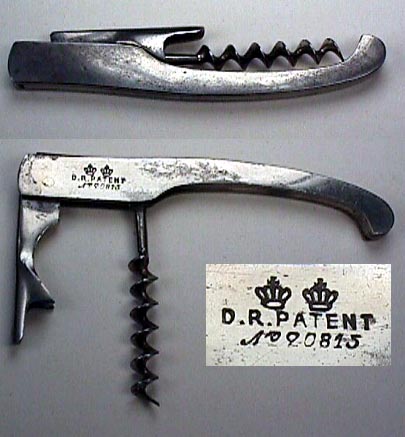Actually my route to getting an invite to the event that was attended by around 40 of the great and good of Welsh Wine, along with a few journalists, is testimony to the power of social media. Through connections on twitter and this blogger site I appear to have made it onto a mailing list of the recently formed Welsh Vineyards Association chaired by Richard Morris.
The email I received invited me 'as a leading wine writer / critic we would be delighted if you could attend'. Please excuse me blushing at this point and of course my friends and family laughed out loud (LOL if you will) when I told them. But no matter, the invite was there and I WAS delighted to attend.
 |
| Help yourself! 35 wines from the inaugural Welsh Wine Awards |
 And the results were remarkable. But then I knew they would be as soon as I started tasting the wines. The guests were invited from 1pm, the judging having taken place in the morning. On arrival, I was a little nervous as I did not know anyone else invited but I needn't of been. Soon I was chatting away quite happily in the cosy confines of the Cariad Restaurant and Bar. All of the wines were set up on the bar for us to try and it was very much help yourself to whatever you wish.
And the results were remarkable. But then I knew they would be as soon as I started tasting the wines. The guests were invited from 1pm, the judging having taken place in the morning. On arrival, I was a little nervous as I did not know anyone else invited but I needn't of been. Soon I was chatting away quite happily in the cosy confines of the Cariad Restaurant and Bar. All of the wines were set up on the bar for us to try and it was very much help yourself to whatever you wish. |
| Cariad Wine in the Restaurant of the same name. LOVEly! |
 |
| Helpful list left by the staff for me to photograph. Not sure about the Pea Soup but the others were great. |
Soon we were called to take our seats and a simple, but delicious, lunch of grilled pollock was served. And again, we could help ourselves to whatever wine we liked to enjoy with lunch. I chose the Wernddu White 2011 which was later announced to be a Bronze medal winner.
 |
| Smoked Salmon Mousse anyone. |
I mentioned Richard Morris as the Chairman of the newly formed WVA (Welsh Vineyards Association) earlier and it was he who invited me to this ground-breaking event. And it is also he who has much to be proud of as his fantastic wines from Ancre Hill Estates garnered three bronze, three silver and the one prestigious gold medal awarded for the Ancre Hill Sparkling Rose 2009.
That was not quite the end of my day though. I was very impressed with Llanerch and went to thank Ryan Davis, it's owner, before organising a tour with Ben, a very helpful member of the team. And what a place. They have the fabulous Cariad Suite and Junior Suite in the main house and seven further studios in a second building. All are beautifully appointed but the Cariad Suite is breathtaking. My thoughts turned a long promised weekend away with Louise, my wife and hopefully a chance to also attend the Angela Gray Cookery School to improve our cooking skills.
 |
| Emm...Yours truly right of shot on Welsh language TV |
After a long drive home I was monitoring twitter for feedback on the day when I found out a feature about the event was to be on S4C's Heno (Tonight), the Welsh language channel. We hopped over to the channel and within five minutes there I was, right of screen, being filmed by the camera crew mentioned earlier. And, yes, I've told everyone about it I've met since.
That is it for now. I will be back with another blog soon. If you would like to meet me in person and home is in the UK why not take a look at my website www.gloryofwine.com. Maybe you need an excuse for a party involving tasting some lovely wines. Do get in touch.
You can also follow me on twitter. www.twitter.com/gloryofwine or see my facebook page https://www.facebook.com/pages/The-Glory-of-Wine-Blog-and-Tastings.
Until next time, enjoy your wine. Cheers! or in Welsh Lechyd Da!
Simon
RESULTS
Welsh Vineyard Association Wine Competition 2013
Class 1- Still White and Still Rose
101 Ancre Hill Chardonnay 2010
102 Tintern Pava Bacchus 2011 SILVER
103 Glyndwr Rose 2011
104 Ancre Hill Rose 2010
105 Wernddu Rose 2011
106 Tintern Pava Bwthyn Rose 2011 SILVER
107 Pant Du Rose 2012
108 Tintern Pava Bryn Heulog 2011
109 Tintern Pava Sir Fynwy 2012
110 Sugerloaf Madeline Angervine 2011
111 Wernddu White 2011
112 Sugerloaf Blush 2011
113 Sugerloaf Abergavenny 2011
114 Sugerloaf Calon Lan 2011
115 Ancre Hill White 2012
Class 2- Red Wine
201 Whitecastle Rondo 2012
202 Ancre Hill Pinot Noir 2009
203 Tintern Pava Ty Coch 2011
204 Ancre Hill Pinot Noir 2011
205 Glyndwr Red
206 Whitecastle Pinot Noir 2012
Class 3- Sparkling White and Sparkling Rose
301 Wernddu Sparkling 2007
302 Glyndwr White Brut 2009
303 Ancre Hill Sparkling Pinot Noir/ Seyval
Blanc 2008
304 Sugerloaf Rhosyn 2007
305 Tintern Pava Dathliad Rose 2010
306 Llanerch Sparkling Blush 2011
307 Glyndwr Rose Brut 2010
308 Ancre Hill Sparkling White 2008
309 Llanerch Sparkling Brut 2011
310 Whitecastle Regent Rose 2011
311 Ancre Hill Sparkling White 2009 BRONZE
312 Tintern Pava Dathliad White 2006 BRONZE
313 Ancre Hill Sparkling Rose 2009
314 Meadowview Gwyn-y-Fro White 2010 BRONZE


































